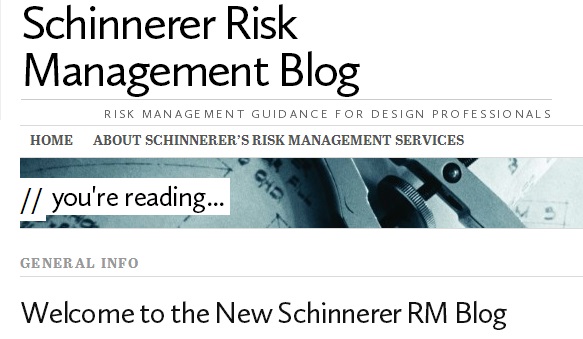Hackers make headlines daily with targets ranging from major Swiss banks to Minecraft users to German nuclear power plants. But what are the risks to architects and engineers?
Professional Liability carrier Victor O. Schinnerer urges design professionals to Take Cyber Liability Exposures Seriously in a recent blog post:
Cyber liability problems that have disrupted firm operations often are based on one of three vectors:
— insiders who are dissatisfied or recognize their ability to tap firm assets and use that access for harm or personal profit;
— past employees who either take digital assets with them or to enact revenge against their former employers corrupt firm systems and information; and
— hackers who know that confidential project data is vulnerable and hold digital information hostage until a ransom is paid.
Hackers Can Wreak Havoc on a Firm
Although internal threats cause many cyber liability breaches, a malicious outsider is one of the greatest fears of professional services firms. A hacker could cause data inaccessibility through alteration or destruction. A firm would lose intellectual property and no longer be able to meet contract objectives and deadlines. Attackers who gain access to a firm’s data can encrypt it using ransom-ware and extort payment to regain access to information. Firms that do not properly preserve digital assets through robust back-up systems often have no alternative but to pay the ransom.
Construction projects today are increasingly dependent on digital technology. The adoption of BIM and the increasing use of digital technologies in designing, constructing, and operating buildings and infrastructure are transforming the way the industry works. The concept of collaborative work through the sharing and use of detailed models and large amounts of digital information requires that parties be aware of vulnerability issues and take appropriate control measures. Improper access controls could lead to an attack severely disrupting progress on a project, causing delays or remedial work that could lead to significant claims from owners, lenders, or other stakeholders. And if confidential information on the structure or systems of projects is accessed by unauthorized parties, the safety of the owners and users of the buildings or infrastructure could be put at risk.
It is possible to insure against these vulnerabilities. Schinnerer’s Cyber Protection Package is one example of such coverage. Here are a few others:
- Professional Underwriters Agency — Cyber Liability Insurance Solutions
- AXIS Network Security/Data Privacy
- Beazley Technology, Media & Business Services
- HCC Professional Cyber Liability
- IronShore Tech Defender
Give your local a/e ProNet broker a call to discuss your options today.





